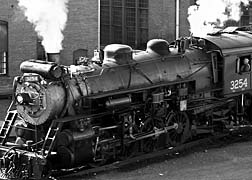 "I was in an orphanage in Pittsburgh when I saw him for the last time," recalls Rosemary. "He was sitting on a bench, he had on his white work shirt and some slacks. I said 'Daddy, may I please go home, I want to leave here'. He answered one word: 'No'. He didn't take me on his lap, say I love you, didn't hug me. I don't know if he knew he was dying or what was going on in his head but he didn't show any emotion. Out of his shirt pocket he pulled a bottle of medicine and drank it down like it was a Coke, he just gulped it. Could be he was in pain, maybe it was morphine. Then he coughed up blood in front of me. The other few times I saw him he seemed sickly to me.
"I was in an orphanage in Pittsburgh when I saw him for the last time," recalls Rosemary. "He was sitting on a bench, he had on his white work shirt and some slacks. I said 'Daddy, may I please go home, I want to leave here'. He answered one word: 'No'. He didn't take me on his lap, say I love you, didn't hug me. I don't know if he knew he was dying or what was going on in his head but he didn't show any emotion. Out of his shirt pocket he pulled a bottle of medicine and drank it down like it was a Coke, he just gulped it. Could be he was in pain, maybe it was morphine. Then he coughed up blood in front of me. The other few times I saw him he seemed sickly to me.He was a brakeman and an engineer for the Monongahela Connecting Railway in Mount Washington, PA, where he was employed right after the war from 1946 to 1961. His lungs were fine when he got out so I don't believe he got the cancer in the war. The VA checked and his lungs were clear. At work, he was around asbestos every day, breathing those fumes a lot.
I went to the Workman's Retirement Board trying to find out how much he made and the hours he worked just because I never knew anything of this as a child and they showed me his work earnings records. The Veterans Department gave me his medical records and the death certificate. I hadn't known it before but the records said he had had a lung removed. It must have been removed in January 1961, right before he died, because when I went through his records I didn't see much of a lapse between when he came off surgery and when he went back to work.
He died on February 14 and was buried on my birthday, Feb 18, 1961. I left the orphanage to go the funeral, I viewed the body and was driven back to the orphanage that day. I was 11.
I found out he had mesothelioma from the death certificate. The cause of death was marked as 'recurring carcinoma of the lung', perhaps it spread to the other lung, I don't know. The certificate also listed pulmonary thrombosis; he'd had a blood clot that broke off from the leg and went to the lung.
The job should have said to him: 'you go on disability or we're going to put you in another department to protect your remaining lung'. But they didn't do that in those days.
I'm almost certain he got lung cancer from handling asbestos directly in the railyard but I need to research how that happened. In those days the brakemen pulled on the brake, which was a long stick to stop the train, but I don't know if they wore gloves. I'm not sure how things work there; I've never been in one. I would like to find out if they stored the asbestos there, or made it there.
I didn't have much contact with the rest of my family but this one aunt, my godmother, said 'I tried to get your father to go on disability but he decided to go back to work instead'. It's devastating because he was 54 and dying and maybe he didn't have time to have a house and take my 2 sisters, myself and my brother out of the orphanage.
I didn't get any compensation from his death except for the Railroad Minor Children Benefits but that went to the trust fund and to the orphanage, to the Catholic Diocese of Pittsburgh. My mother didn't get any compensation either.
Doing my research, I've met with this speaker of the house in Harrisburg and spoke a long time to his chief of staff; I'm supposed to send them some information about my dad and the railroad. "
READ MORE RAILROAD WORKER INJURIES LEGAL NEWS
Although Rosemary has been told that the statute of limitations on her father's case is past, she continues to research and piece together her father's life and times on the railroad. She is hoping to connect with people who knew of the work conditions on the railroad in Monongahela in 1950s and '60s. "Maybe," she says, "people will contact me and say, 'I knew your dad when I worked in Pittsburgh'."
